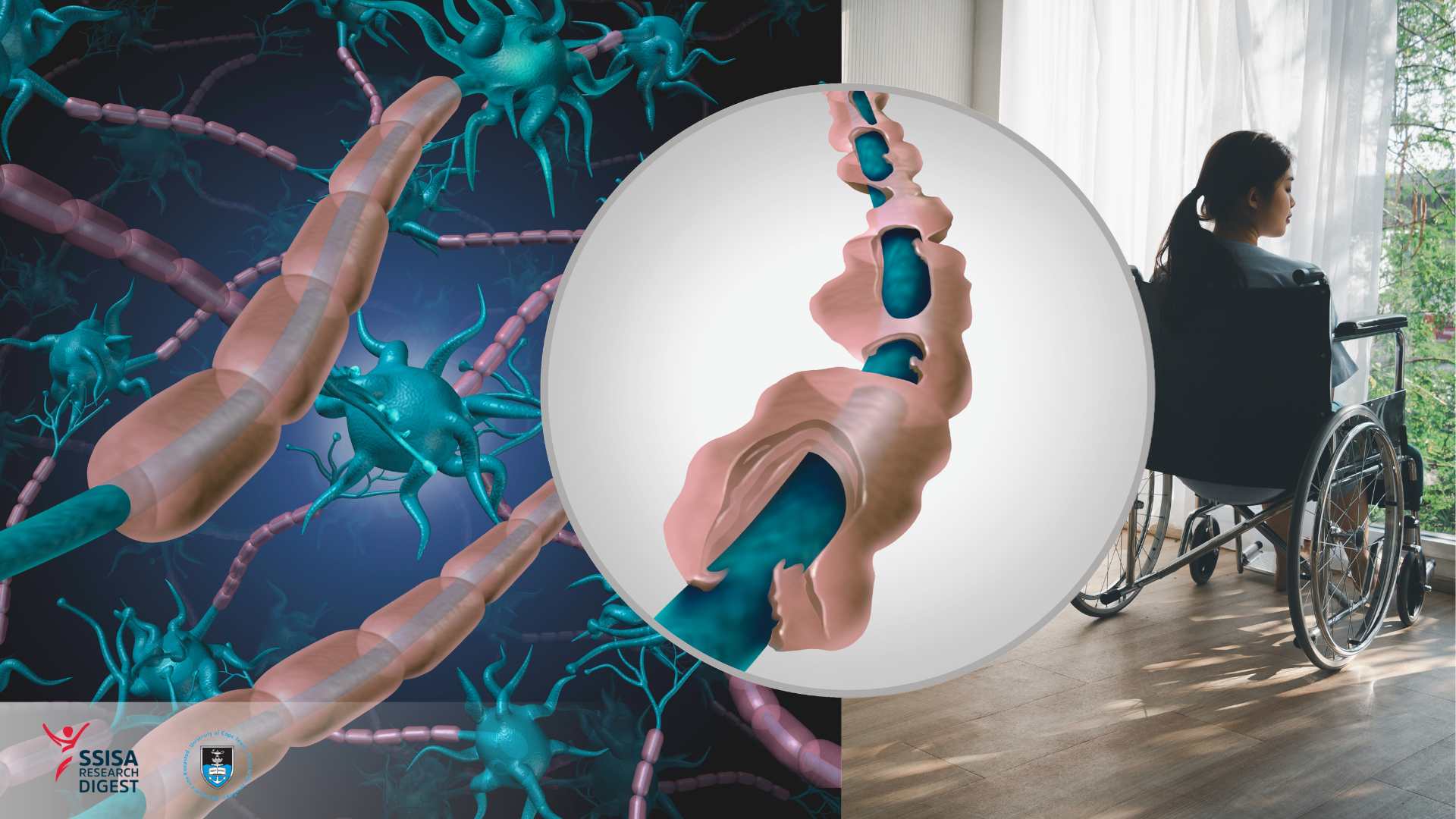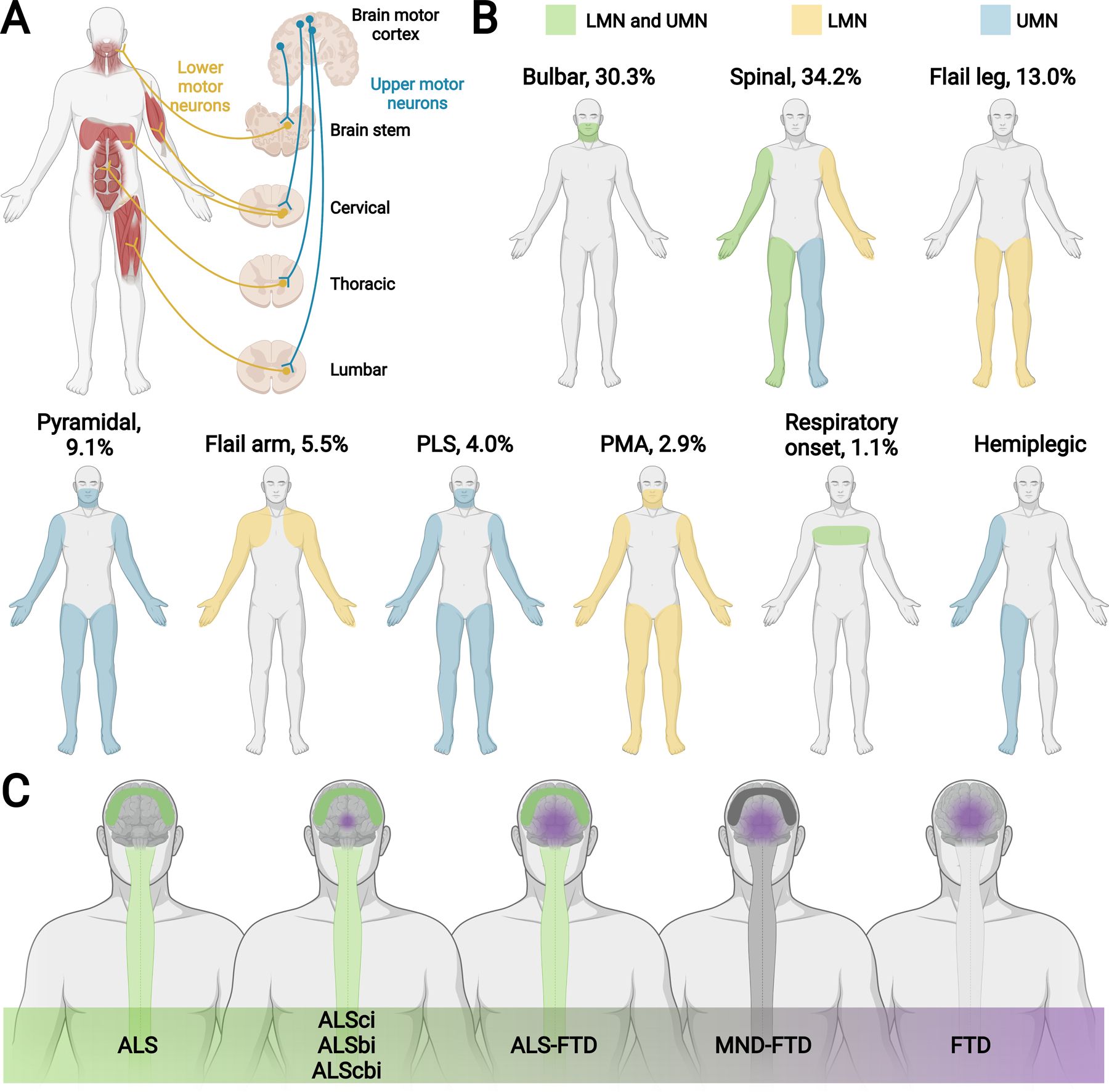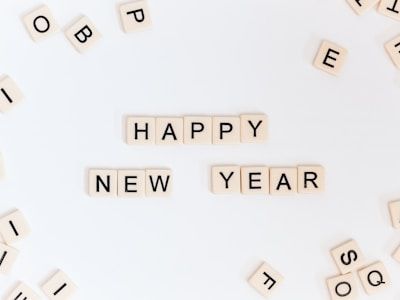Understanding ALS

What is Amyotrophic Lateral Sclerosis?
This chronic condition of progressive neurodegenerative condition that affects nerve cells in the brain and spinal cord, leading to muscle weakness and loss of voluntary motor control and muscle movement which include breathing ability (1).
The degeneration and death of these motor neurons as a result of ALS, results in the cessation of effective signals to the muscles, causing muscle weakness, twitches, and the loss of muscle mass (atrophy). Progression of the disease eventually results in the loss of the ability to initiate and control voluntary movements such as walking, talking, chewing and other vital functions such as breathing (1,2). Most cases of ALS are sporadic, meaning that the disease seems to occur at random with no clearly associated risk factors or genetic predisposition.
There are various types of ALS:

On a cellular level, ALS is marked by the deterioration of upper and/or lower motor neurons, which are the nerve cells that govern muscle contractions. Upper motor neurons form pathways from the brain to the spinal cord, while lower motor neurons establish connections from the spinal cord to the muscles (3).
Muscle strength diminishes, starting from the initial point of onset and progressively affecting adjacent muscles. This pattern persists until it reaches a stage where patients lose the ability to swallow and, ultimately, to breathe. The rate at which ALS advances varies greatly from one individual to another (3).
Beyond muscle weakness, as many as half of the individuals with ALS may also exhibit cognitive and behavioral alterations. These changes reinforce the idea that amyotrophic lateral sclerosis is part of a broader spectrum of neurodegenerative disorders, which includes conditions like frontotemporal dementia (3).
Treatment as per research evidence:
Although several approved drugs may prolong survival, reduce the rate of decline, or help manage symptoms, no treatment stops or reverses the progression of ALS (2). It is reported that the approach to treatment is centred on symptom management and enhancing life quality. Some therapies, such as riluzole, edaravone, non-invasive ventilation, and the use of a gastrostomy tube for feeding, may extend life expectancy for certain patients. Ongoing research is dedicated to discovering and evaluating new treatments.
As such - rehabilitation, including physical, occupational, and speech therapy, have become imperative as supportive treatment. Physical therapy including low-impact exercises such as walking, swimming, cycling (stationary bike), and other range of motion exercises can help maintain muscular function, lower the risk of injury (falls) and help ease joint pain (1-3).
These exercises, when incorporated holistically into the rehabilitation program, can help to contribute to the longevity and independence of those suffering from ALS.



